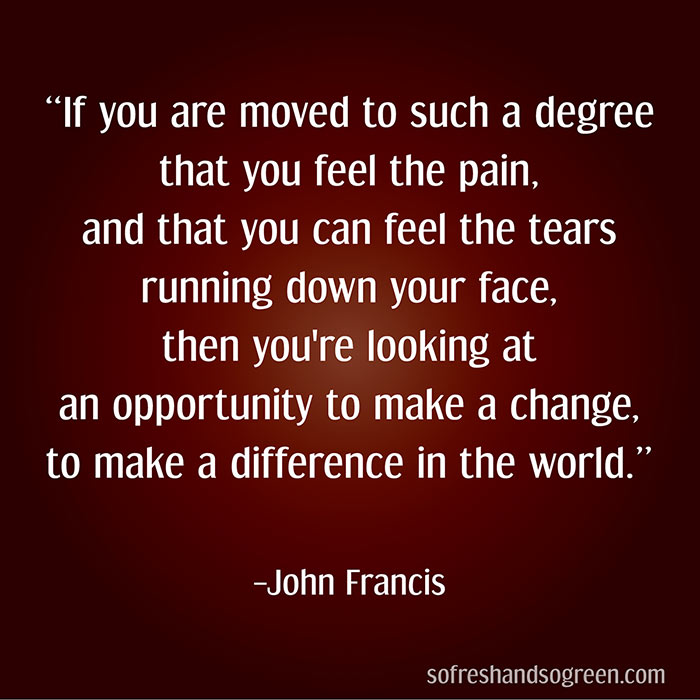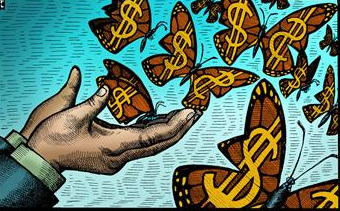
I love this quote by John Francis because it captures what you need to do with your donors. You need to move them to such a degree that they feel the pain, they feel the tears running down their faces and understand that they have an opportunity to make a difference in the world.
And this “moving the donor” to feel does not need to be complicated and involved. In fact, the most powerful way to tell a donor that her giving is making a difference is to tell her about one life that has changed. I was recently sent an example of this and I’d like to pass it on to you.
The format of the thank you is a standard sized card.
The front of the card has a very large picture of a father with his 10 year-old son. The caption below the picture says, “Paul and his family thank you…”
Inside, the copy continues as follows:
Last year, Paul took a brave step. He took responsibility for his drug and alcohol problem and entered the [name of organization] Rehabilitation Center. After months of hard work, he has a promising future — he’s working and planning to go back to school. Most important, his beautiful wife and son have Paul back.
Every week, the entire family goes to [name of organization] to stay focused on sobriety.
Paul and his family thank you for your financial gifts to [name of organization]. You made it possible for little Max to have his dad back. You are making a tremendous difference in the lives of people in our community.
Here is why this is so powerful.
First of all, it’s the picture. I am looking at it right now, and I can feel it. I see a young father looking straight into the camera. There is hope, kindness, care and love in his eyes. You want to like him. And snuggled up to the father’s neck is his son, Max, with a cute smiley face hat on. You can tell that Max loves his dad and is glad to have him back. There is an energy about the picture that just pulls you in. And, if you are the donor, you immediately know that your giving has made a difference in this man’s life and the life of his young son.
And secondly, it’s the story. Something good has actually happened. A father, once gripped by drugs and alcohol, is getting free from the prison he has been in. And his young son, who has desperately missed his father, is finding comfort that “Dad is back.” You can see it in the picture. You can feel it when you read the words.
Jeff and I have talked quite a bit about “taking the donor to the scene,” the phrase that describes using words and pictures to help the donor understand, feel and “see” the need. The same thing is true on the back-side of giving – the stewardship side. If you can show the donor what her giving has done using a picture and a story, it can have a tremendous impact.
And it doesn’t need to be complicated. You don’t need charts, graphs, financial reports and data. Just one life. Just one story. That is all that is needed. And it will fill the donor up with joy. It will affirm that her giving has made a difference, and all will be well. This is the path toward donor retention because it is the only thing that fundamentally matters to a donor – that something good has happened because she gave.
Take steps this week to send a message like this to each donor on your caseload. Each one of them needs to know that his or her giving matters.
Richard
Search Blog Posts







Thanks for blogging the very effective example Richard. I have found that using general illustrations/program examples to thank or influence people makes them lean away. While using specific and personal stories makes people lean in and listen. Broad approach can feel like “it’s about me or my program”, specific and personal approach can feel to the donor like “it’s about the cause, and I’m making a difference in that cause”.
Mustang minister